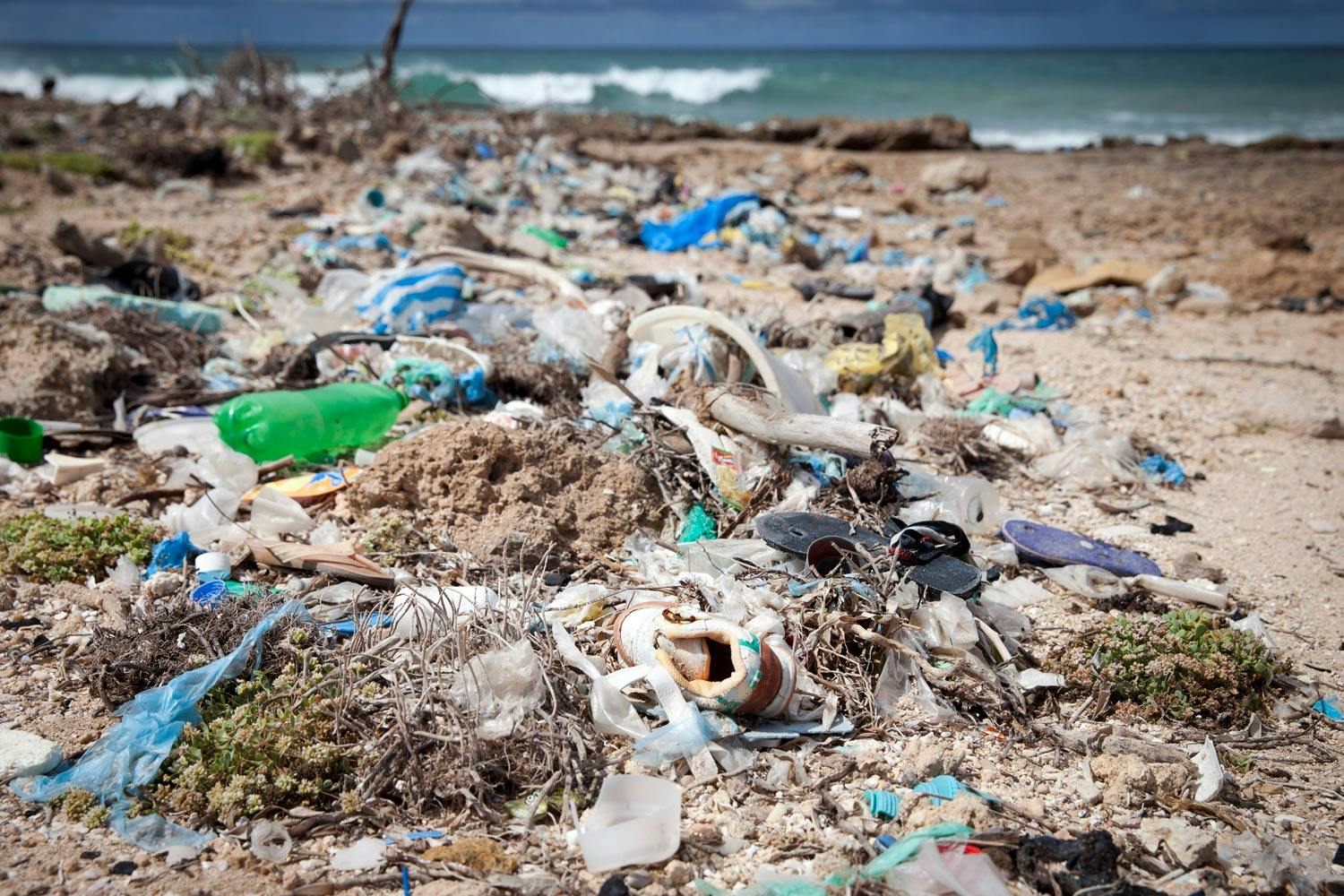7 Ways to Cut Plastic at Home
Easy ways to break up with the stuff that doesn’t break down.
The plastic we use every day so often winds up in the oceans and on its shores.
I have a confession to make. Until embarrassingly late into my 20s, I didn’t know that plastic loofahs were synthetic versions of an all-natural original: fibrous sponges made from the fruit of plants in the genus Luffa. If you’re raising your eyebrow and wondering “How did he miss that?”—forgive my Zillenial ignorance. If, however, your jaw is on the floor like mine was, you’re welcome. Your brain has a new wrinkle.
Now, I’m likely overcompensating because I’m embarrassed by this gap in knowledge, but I think the fact I didn’t know about my loofah’s plant ancestor is bigger than one man’s ignorance. It makes me think about how modern “innovations” have created a culture of disposable plastic goods being the default—to the extent that we’re unaware of natural and/or less wasteful alternatives.
The result: plastic building up in landfills, oceans, and the digestive systems of animals; millions of tonnes of plastic incinerated every year, releasing toxic, climate-warming fumes; and people pouring money into the coffers of petrochemical companies for the privilege of perpetuating this problem.
Initiatives like Plastic Free July try to combat this culture of waste. Founded in 2011 by a local-government employee in Western Australia, Plastic Free July has grown from 40 participants challenging themselves to eschew plastic for a month into a global event. The Plastic Free Foundation estimates that more than 100 million people in 190 countries participated in 2021.
In the spirit of Plastic Free July, here are some ways you can reduce plastic use at home, with shout-outs to some BC companies whose products can help.
1. Use a real loofah instead of a sponge
Forgive my enthusiasm—I’m new to the marvels of this natural scrubber. Luffa is a genus of vines related to pumpkins and squash. It includes the species aegyptiaca and acutangula, whose mature fruits are really fibrous. Dry the flesh and shake the loose seeds out, and you have yourself a natural sponge for use in the shower or the kitchen sink. You can get yourself one from Victoria-based Nezza Naturals, or try growing your own with help from West Coast Seeds.
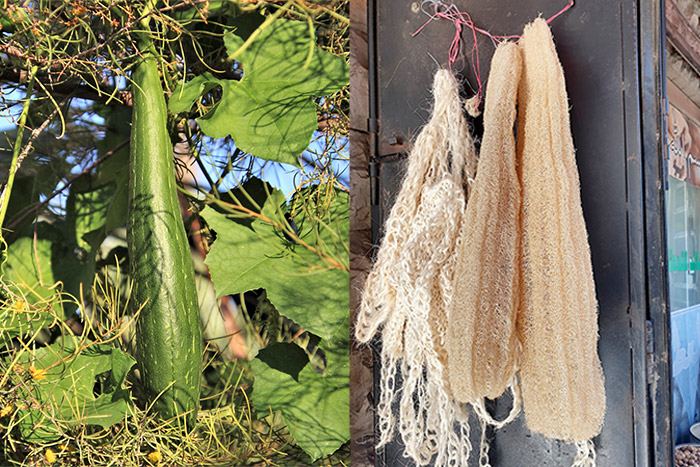
A loofah fruit hanging from the vine (L) and two loofah sponges drying on the line (R)
2. Replace plastic wrap and zipper bags with beeswax wraps
Beeswax wraps are flexible, breathable, waxed fabric sheets you can use to protect your food. Made from cotton, beeswax, tree resin, and plant oils, they’re a biodegradable alternative to plastic wrap and zipper bags. They come in all kinds of colours and patterns and are easily washable with soap and cold water. They’ll survive up to a year of regular use and even longer with good care. BC residents can buy wraps from myriad local companies, including Vancouver-based East Van Bees and Pollen & Hive, and Courtenay’s Coastal Hive.
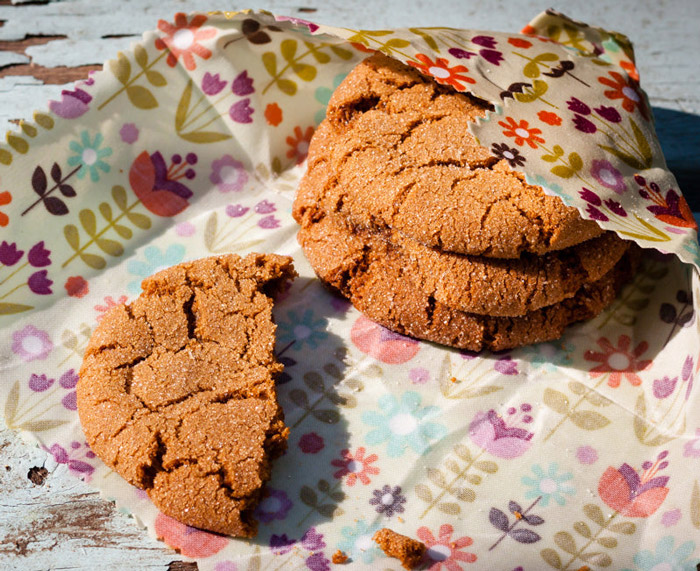
3. Use refillable soaps and detergents
With refillables, you can replace single-use plastic bottles with reusable metal or glass containers (or plastic you already have). LFT is a Port Coquitlam-based brand that offers dozens of refillable products including hand soap, dishwasher powder, hand sanitizer, and laundry detergent. You can buy and refill LFT soaps from Greenworks Supply in Vancouver and Burnaby, The Refill Stop in New West, or from their own factory store.
Shops like The Soap Dispensary and Refill Road in Vancouver also offer in-store refills on cleaning products. If you’re on Vancouver Island, check out West Coast Refill in Victoria or Vancouver Island Refillery in Nanaimo. Elsewhere in BC, directories like this one can help you find a refillery near you.
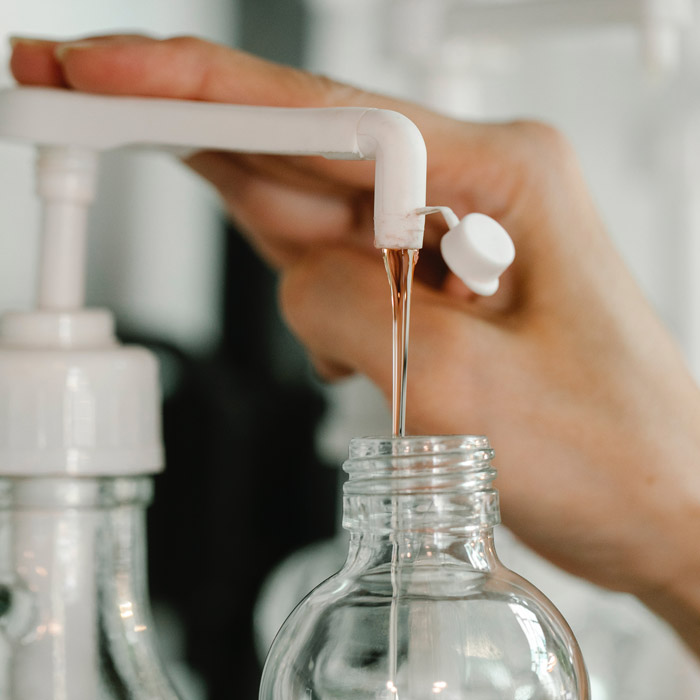
4. Want to do away with containers entirely? Try using laundry strips
Tru Earth and Good Juju are two BC-based brands of laundry strips: super-concentrated sheets of detergent that dissolve in both hot and cold water. They’re a plastic-reducing alternative to the liquid and powder stuff, because they come in paper sleeves or boxes rather than bottles or tubs. And since they’re pre-portioned, there’s no mess of pouring or measuring. Plus, they take up less storage space!
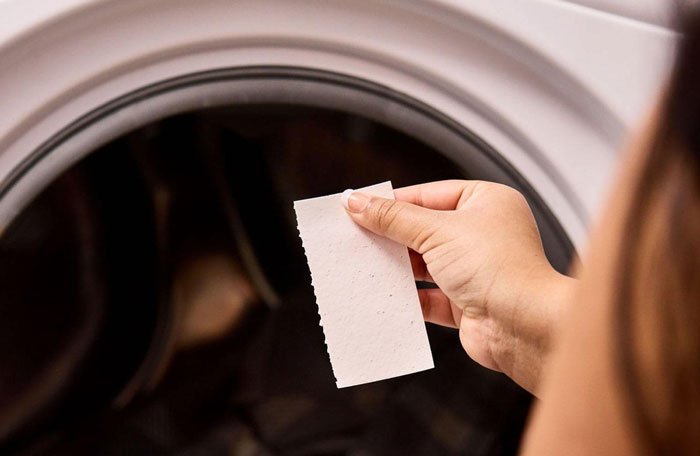
5. Get your shampoo in bar form
Shampoo and conditioner are two more products that typically come in single-use plastic packaging. But both of them—and even dish soap—are also available in solid form with no need for a bottle. For shampoo and conditioner, Plenty + Spare is a Vancouver-based option. (Good Juju also makes hair-care bars.) For the kitchen, check out Make Nice Company’s solid dish soap.

6. Try a spaghetti scrub
These noodly dish scrubbers from Japan come in two varieties: one made with peach pits and the other with corn cobs. They take advantage of these natural abrasives to clean your dishes—even dried-on food—without any detergent at all, so you can rid your kitchen of plastic scrubbers and detergent bottles. They also dry more quickly than sponges, so they smell less and stay usable longer, according to a test conducted by Apartment Therapy. There’s a catch, though—spaghetti scrubs contain a bit of urethane adhesive. So while they’re not entirely plastic-free, you’ll still get more mileage and use less plastic than with a regular sponge and bottle of soap.
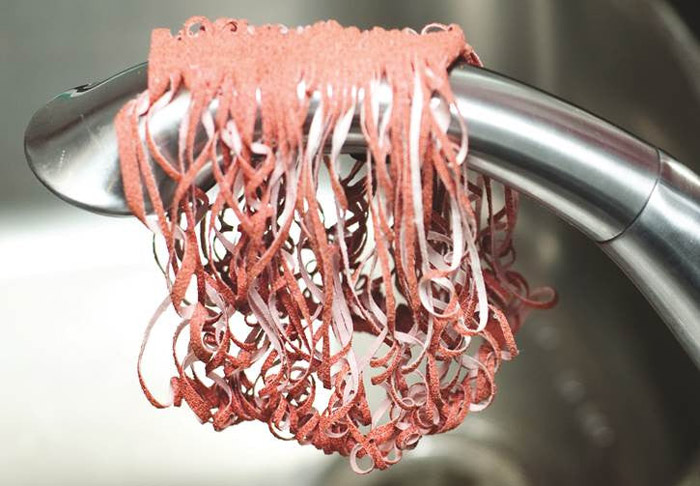
7. Buy loose leaf tea
Those pyramid-shaped tea bags some fancy teas come in might feel silken, but they’re often made of polyethylene terephthalate (PET) or nylon. A recent McGill University study found that such tea bags release billions of micro- and nanoplastics into your cup. Even if scientists haven’t yet concluded whether this poses a health risk, it’s still single-use plastic our landfills don’t need more of.
What’s more, some tea bags that look like paper actually contain plastic. Brands often use polypropylene adhesive to keep the bag sealed and the string attached, or use a blend of plastic fibres and paper to prevent the bags dissolving in hot water. This plastic, of course, isn’t biodegradable, and it isn’t recyclable either.
So-called “sustainable” and “biodegradable” tea bags made from polylactic acid (PLA) are often marketed as an alternative to plastic tea bags. This material is sometimes called Soilon or described as “corn-based” or “made from cornstarch.” But PLA is still plastic—it’s widely used as the filament in 3D printers—and can only be composted in very specific conditions through industrial composting systems. Even with tea bags purportedly made from natural fibres, plastic could be present. One study found out of 22 tea bags made from cellulose, 15 contained some plastic. In the end, loose leaf is your friend.

Our plastic problem is complex. But as this list shows, there are many simple ways to just use less of it. For me, switching to solid shampoo and conditioner was the first step. My next one? A natural loofah.
This article is first in a series about reducing plastic in our lives. The series was made possible by a Vancity Community Branch Grant. Read the second story: “Living the Package-Free Shopping Dream.”
